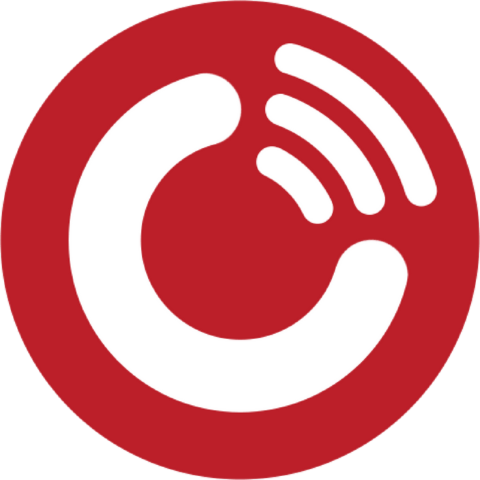“Ayurveda does not treat a disease state. Ayurveda treats a patient.”
Thom Knoles
Episode Summary
Ayurveda, the ‘science of life’ has become very popular in developed nations in recent decades, thanks to the work of Maharishi Mahesh Yogi in reviving this ancient body of wisdom.
Dating back several thousand years, the practice of Ayurvedic techniques was forced ‘underground’ when the British colonized India and imposed their own ‘modern’ approaches to health.
Fortunately, some families passed the wisdom down through the generations, allowing Maharishi Mahesh Yogi to bring three of the greatest minds on the subject together for a long-overdue revival of this timeless body of knowledge.
In this episode, Thom explains some of the details of that revival, and explores some of the key differences between the Ayurvedic and ‘allopathic’ approaches to health. Importantly, he explains how the two approaches are complementary rather than ‘alternative’ to each other.
Subscribe to Vedic Worldview
Episode Highlights
01.
The Meaning of Ayurveda
(00:00)
02.
The history and extinction of Ayurveda
(01:41)
03.
Ayurveda was made illegal in India
(02:59)
04.
The revival of Ayurveda by Maharishi Mahesh Yogi
(04:01)
05.
The three great masters
(04:56)
06.
The rise of Ayurveda
(06:15)
07.
Panchkarma
(07:10)
08.
Not an alternative to western medicine
(07:50)
09.
The next generation of Ayurvedic practitioners
(09:06)
10.
The difference between Ayurveda and allopathy
(10:31)
11.
Treating the person
(12:14)
12.
The magic bullet
(13:38)
13.
The entire spectrum of human experience
(14:22)
14.
The Vaidya’s
(15:57)
15.
Practicing Vedic Meditation to reduce stress
(17:10)
Jai Guru Deva
Transcript
The Revival of Ayurveda
THE MEANING OF AYURVEDA
[00:00:00] Ayurveda, A-Y-U-R veda, is actually in Sanskrit, ayush veda, A-Y-U-S-H veda, but there is a rule in Sanskrit, the ancient language of India that states that you can’t make a ‘sh’sound and a ‘vuh’ sound in a sequence. And so it becomes Ayurveda.
[00:01:07] Ayush means, the first word of Ayurveda , means relevant longevity. It doesn’t mean longevity, it means relevant longevity. In other words, for the period of time, for which your longevity is relevant, however long that may be, that you should be living your fullest physiological potential.
[00:01:28] Veda means knowledge. Ayurveda is the knowledge of relevant longevity. Ayurveda is a millennia-old body of knowledge.
THE HISTORY AND EXTINCTION OF AYURVEDA
[00:01:41] It’s earliest proponents are part of the mythos of ancient India. We know for certain that certain proponents of Ayurveda, Charaka and Sushruta, great rishis of the past, were holding forth on the subject of Ayurveda literally thousands of years ago.
[00:02:02] After the beginning of the invasions of India, first by the Mughals, and then next most notably by the British, during the period of time of the British colonization of India, the science of Ayurveda went extinct. And the reason it went extinct was because Western medicine, which was a new form just being organized and reaching its adolescence during the Victorian era, and reaching its maturity into the early parts of the 20th century, was such a fascinating science.
[00:02:38] And also part of the process of colonization always will be to take whatever folk medicine might be there, for example, or folk songs or folk cultures and things like that, and to replace them with the songs, the cultures, and in this instance, the medical systems of the colonizers.
AYURVEDA WAS MADE ILLEGAL IN INDIA
[00:02:59] And so it wasn’t long before laws were passed in India making it illegal to practice Ayurveda and people were required to go to Western medical practitioners, preferably British. But gradually, as time went by, Indians themselves had no choice but to be indoctrinated in the systems of Western medicine, what is referred to in India itself as allopathy.
[00:03:28] Allopathic medical systems are basically the conventional medical systems with which we’re familiar in the west. And India began to become, in fact, a factory of Western-style medical doctors that fanned out all over the globe. No matter where you go, you can find an Indian medical practitioner because it was considered to be a great profession, to be Western trained and then to go out and conquer the world and become the head of Harvard medical school or whatever it was.
THE REVIVAL OF AYURVEDA BY MAHARISHI MAHESH YOGI
[00:04:01] And into all of this came my master Maharishi Mahesh Yogi. He had been eluding, from the sixties into the seventies, to the ancient science of Ayurveda and how one day he intended, after bringing his meditation technique to the world, he intended to bring out the knowledge of Ayurveda and bring it into the modern consciousness and make it available to people.
[00:04:29] There were still in India, three or four major practitioners of Ayurveda that were known and who managed to escape persecution. And of course, now this was well into the period of India’s independence, which happened in the late 1940s. By 1980, Maharishi made a call to gather together the handful of remaining Ayurveda practitioners.
THE THREE GREAT MASTERS
[00:04:56] Amongst them, Dr. B.D. Brihaspati Dev Triguna and Dr. V.M. Dwivedi and Dr. Balraj Maharshi. These three, who, each of them were great masters in their own areas: Balraj Maharshi was an expert with knowing what every plant that you could conceive of did for humans, if used in a particular way. And he was someone who reputedly could “speak to the plants,” and he lived his life in a forest, and he was brought in from the forest to meet Maharishi Mahesh Yogi, my teacher.
[00:05:37] And then came Dr. Brihaspati Dev Triguna, and Dr. Dwivedi. Triguna’s specialty, he was referred to sometimes as a walking CAT Scan. He could place his fingers on your pulse of your wrist, and he could tell from feeling that pulse, everything that was going on in your body that was of importance. Where the balance was, where the imbalances were and so on.
[00:06:02] And then Dr. Dwivedi was an expert in the subject of the use of minerals to aid the health process and bring balance to the body.
THE RISE OF AYURVEDA
[00:06:15] So these three people were brought together with Maharishi in 1980. Prior to 1980, you would never have been able to find anything Ayurvedic. Today in 2021, I could walk into any store, even Safeway, and pick up some body butter to rub on to dry skin and it will have somewhere written on it, Vedic. This is Ayurvedic. Ayurvedic toothpaste, Ayurveda this, Ayurveda that. Most of the people who write those things actually don’t even know what Ayurveda is.
[00:06:44] But, Ayurveda seems to be a great way, using those words, seems to be a great way of selling things these days.
[00:06:50] But Ayurveda had become virtually unknown in India and in the west, as recently as 1980. Then in 1980, working with these three masters of Ayurveda, Maharshi put together an entire program of Ayurveda. Treatments like panchakarma.
PANCHAKARMA
[00:07:10] Panchakarma is a method whereby you can go away to a residential facility and have experts providing you with purgative treatments for balancing and normalizing the imbalance features in your body, and to bring your body back into a completely balanced state.
[00:07:28] The use of various kinds of herbs, Americans love to say ‘erbs’ instead, but everyone else in the world says, herb, the way it’s spelt. The use of herbs to bring about balance, plant-based medicine and mineral-based medicine, and the results of Ayurveda are absolutely astonishing and have become the stuff of legend.
NOT AN ALTERNATIVE TO WESTERN MEDICINE
[00:07:50] Ayurveda is something that does not have to be used as an alternative to Western medicine. In fact it fits in very well with Western medicine and it’s not one of those things that says, “Don’t do Western medicine, only do Ayurveda.” Ayurveda is something that is supplementary knowledge and it’s complimentary.
[00:08:11] If we want to think of it in a proper adjectival concept, it would be complimentary medicine to Western allopathic methods.
[00:08:22] Prior to 1980, the whole subject of Ayurveda had gone dark. After 1980, it started to become a household word. And now today, Ayurveda from every kind of source and of every level of genuineness, from zero genuineness to very genuine, it is available to almost everyone.
[00:08:45] Our own contact with Ayurveda in modern times, because those original three gentlemen who worked with Maharshi to bring Ayurveda back out and its fullness, and to present to the world a complete picture of all of its capabilities, all of its treatments, all of its methods, all of its tonics and so on, they’ve all since passed away.
THE NEXT GENERATION OF AYURVEDIC PRACTITIONERS
[00:09:06] They were already very elderly people in 1980. I was there at the time and one of Dr. Triguna’s greatest and most illustrious students was a man by the name of Raju-Ji, Dr. Raju, and he was an eloquent, in English, an eloquent teacher who really made it possible for people like me to understand enough about Ayurveda to become Ayurveda educators.
[00:09:33] And I took the course with Dr. Raju, Triguna , Balaraj Maharshi and V.M. Dwivedi , in 1980. And all the way through till 1986, I studied the Ayurveda. And Dr. Raju who now, like me, is an ancient old man, is today the senior leader of the world understanding, and movement, and education, and practice of Ayurveda .
[00:10:03] And I’m very happy to say that my managers, and my community of Vedic Meditation, have a very close relationship with the Raju family, led by Father Raju, Raju-Ji himself, and we’ve been able to provide access to Ayurvedic medicine, treatments, and knowledge, and products through that family who are the most illustrious family of Ayurveda in India.
THE DIFFERENCE BETWEEN AYURVEDA AND ALLOPATHY
[00:10:31] People often ask me to highlight the differences between allopathy, which is Western medical practice, conventional medicine, and the outlook of Ayurveda. To start with, Ayurveda does not treat a disease state, Ayurveda treats a patient.
[00:10:50] In other words, a particular person will come to an Ayurveda practitioner with a unique set of physiological characteristics, a unique state of imbalances that need to be brought into balance. So an Ayurvedic practitioner doesn’t treat a patient as a syndrome, or treat a patient as a set of symptoms.
[00:11:11] An Ayurvedic practitioner treats a person as a person whose particular imbalanced state is unique to that person. And first of all, the diagnostic method is one that using, generally speaking, pulse diagnosis, able to zero in on very specific imbalances. Which of these are the leading causes, which of them are proximate causes and which of them are unimportant?
[00:11:37] And then to bring balance to the whole individual, through a change in lifestyle, a change in consciousness, learning to meditate and getting the consciousness right, so that the person is not accumulating stress on a daily basis, confusing the whole process, getting the diet right, and giving a very specific dietary regime to that specific person.
[00:11:59] The next person who comes along won’t have anything like the exact same dietary regime, even if superficially, they talk about having similar symptoms to the first person. And so every person is treated as an individual in Ayurveda.
TREATING THE PERSON
[00:12:14] In Western medicine, individuals are not important. Pathology is important. So allopathy, which is the name for Western conventional medicine, is the medical system that looks at people in terms of pathology.
[00:12:30] In fact, if you walk on the grand rounds in any hospital with medical students who are training under a master of diagnostics, walking into a ward, the doctor will point towards a particular human body, a live human body, a person sitting in a bed, or lying in a bed and say, “Here we have a left lobal sarcoma. There’s nothing about the person, it’s a left lobal sarcoma. “Here we have a spiral fracture to the right femur. Here we have a case of asthma,” and so on and so forth.
[00:13:02] People are referred to by Western medical practice, not as a person, but as a disease state, and so referenced to the disease itself. And so rather than treating the whole person, rather than going into the individual characteristics of the person, as Ayurveda would do, there is simply a disease state presenting.
[00:13:21] And then here are the known solutions to that disease state. Either we cover up the symptoms through various kinds of blanketing techniques that are pharmacological or, we go in and try to kill the germs, or we open them up and do surgery, whatever.
THE MAGIC BULLET
[00:13:38] But in general, in Western medicine, there is, looking out for the magic bullet. Someone comes in with severe chest pains. It won’t be any question about what they eat. There’ll be recommendation for a coronary bypass operation, unzip the chest, take out the heart, stick a few veins in there from your leg, pop the heart back in there, zip you back up again and send you home.
[00:14:03] It’s just as, in the way that if you can’t believe you ate the whole thing after eating the entire pizza yourself one night in front of TV, instead of asking you about pizza, just take some Alka-Seltzer, you know, make it go away. But don’t question whether or not you should have eaten an entire pizza to yourself.
THE ENTIRE SPECTRUM OF HUMAN EXPERIENCE
[00:14:22] Once I witnessed, when one of my meditating students was coming out of a hospital, having had a triple coronary bypass operation, the doctor saw the patient, the $400,000 patient, out into the parking lot, in the patient’s wheelchair, and as he got into his family’s car to be driven home, he looked up at the doctor and said, “Should I think about anything to do with my diet or anything like that?” And the doctor just said, “No.” And this was a cardiac surgeon who just finished replacing this person’s veins in and out of his heart.
[00:14:58] Ayurveda wouldn’t do that. Ayurveda is very, very interested in what you’ve eaten, what the state of consciousness is that you’re in when you eat, is it actually food that you’re eating or is it non food? Are you compromising your digestion in any way? Are you inadvertently toxifying your body by eating particular things that seem terribly safe, but actually aren’t.
[00:15:22] Are you inadvertently sabotaging yourself, not just through diet, but also through exposure to too much cold, if you’re one kind of body type. Too much heat, if you’re another kind of body type. Too much argumentative nature, if you’re a different kind of body type. Not enough social contact, if you’re a different body type.
[00:15:42] The entire spectrum and range of human experience is brought into the equation, and the range of counsel and advice given by an Ayurvedic doctor, covers the entire spectrum of the human experience. So that’s one of the big differences.
THE VAIDYA’S
[00:15:57] People often ask me why it is that a great Ayurvedic doctor, these people are known as Vaidya’s – a Vaidya is somebody who is knowledgeable in Ayurveda, an expert practitioner of Ayurveda – as a first stop will want to know if the patient has in fact taken up the practice of Vedic Meditation.
[00:16:20] And the reason for this should be very clear. Vedic Meditation is a simple mental technique practiced for about 20 minutes twice, each day, during which time the mind of the individual is able to settle down to its own least excited state. In that least excited state of the mind, the body naturally follows into its own least excited state. As we know mind and body are one they’re linked, but they’re actually one.
[00:16:48] So as the mind settles down to its least-excited state, the body attains to levels of rest that are unprecedented. This deep and profound restfulness that occurs during the 20 minutes of Vedic Meditation allows the individual’s body to release and relieve, to throw off, accumulated stress.
PRACTICING VEDIC MEDITATION TO REDUCE STRESS
[00:17:10] Accumulated stress, according to most, even Western medical practitioners, is the basis of about 80% of disease presentations. According to the American Medical Association, about four out of five patients who show up to see a family practitioner, or a general practitioner, in fact are not suffering from well-defined pathologies. They’re suffering from overloads of stress.
[00:17:38] And that’s something in which the general practitioner of the west is not trained. And so generally speaking, they’ll send the person home and say, “Look, you have these symptoms. I think you’ve got too much tiredness, too much fatigue, too much stress. There’s really nothing much we can do about it, but if the symptoms get worse, then come back to me.”
[00:17:58] That’s a classic piece of advice to four out of five patients. One out of the five has a broken finger, or has something for which the doctor can prescribe an antibiotic or something.
[00:18:09] To get to those four out of five, an Ayurvedic practitioner is going to say, “Here is the technique. Easily accessed, easily learned and wonderfully, easily practiced whereby you can get rid of the cause of 80% of pathology, accumulated stress.
[00:18:29] “So let’s be sure you’re doing that. And then let’s see what’s happening to these body symptoms and then we’ll deal with the rest of it using our herbal medications, using our purification techniques, using our minerals and other approaches that Ayurveda offers. But let’s clear off 80% of pathology in one fell swoop, practice Vedic Meditation.”





